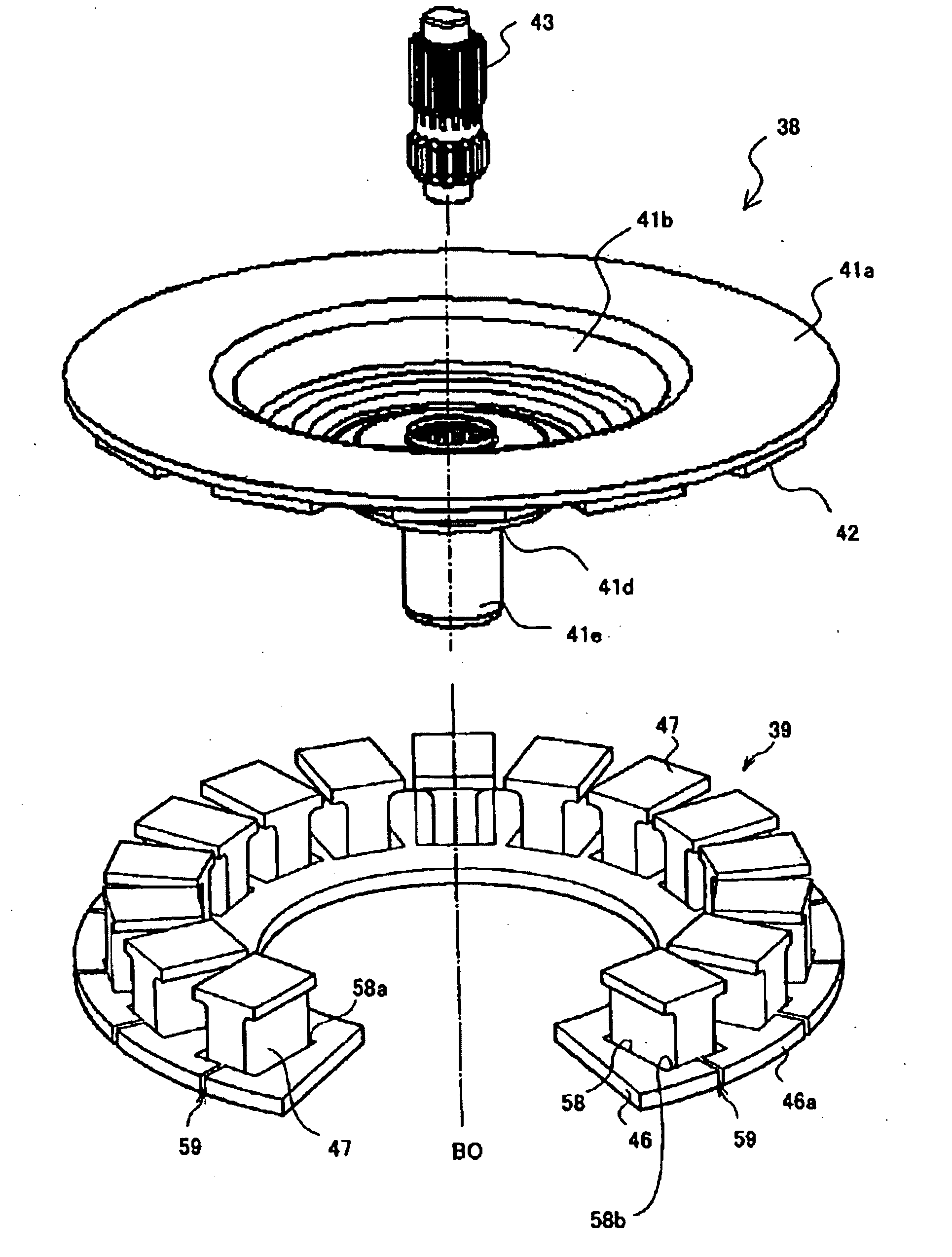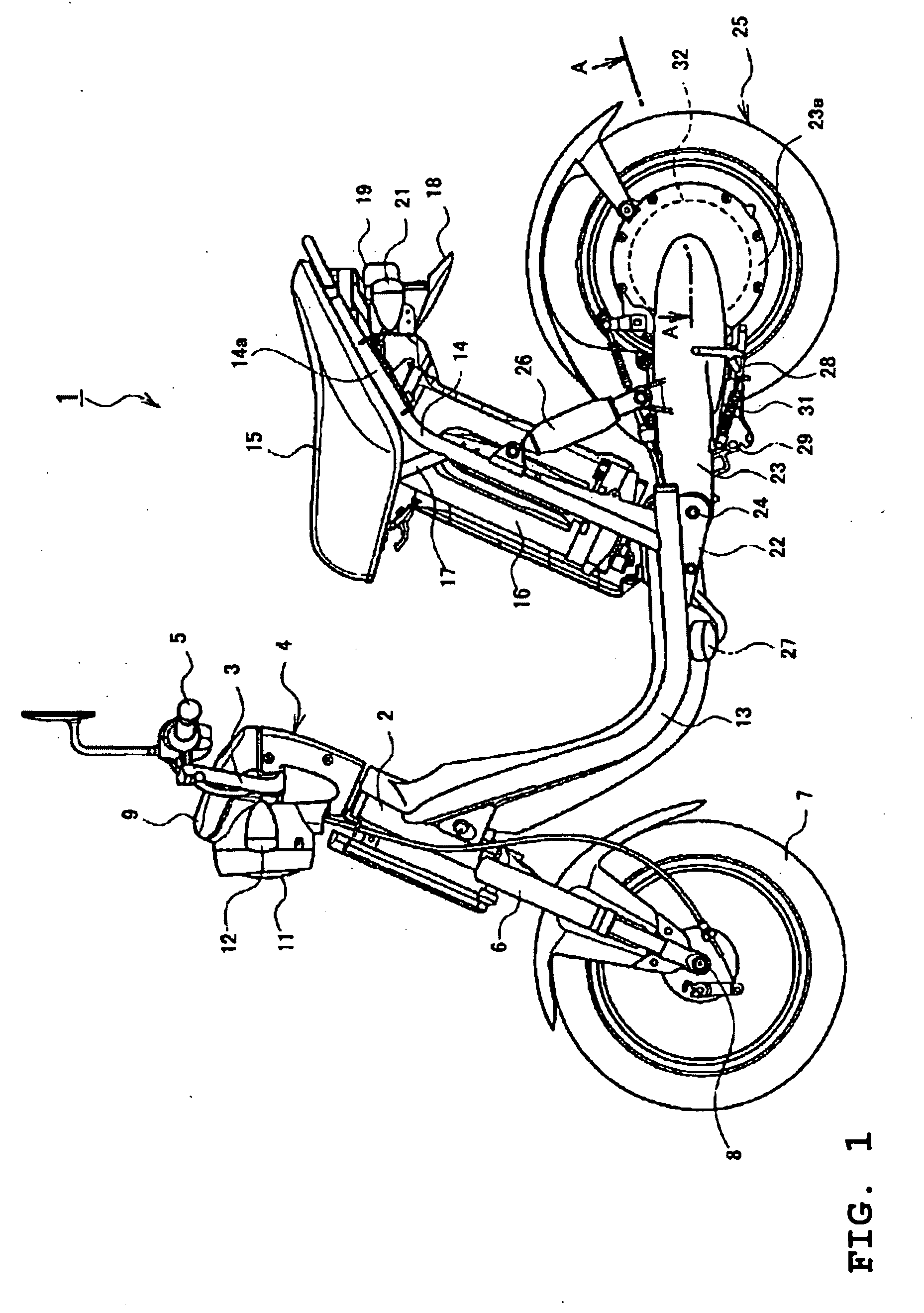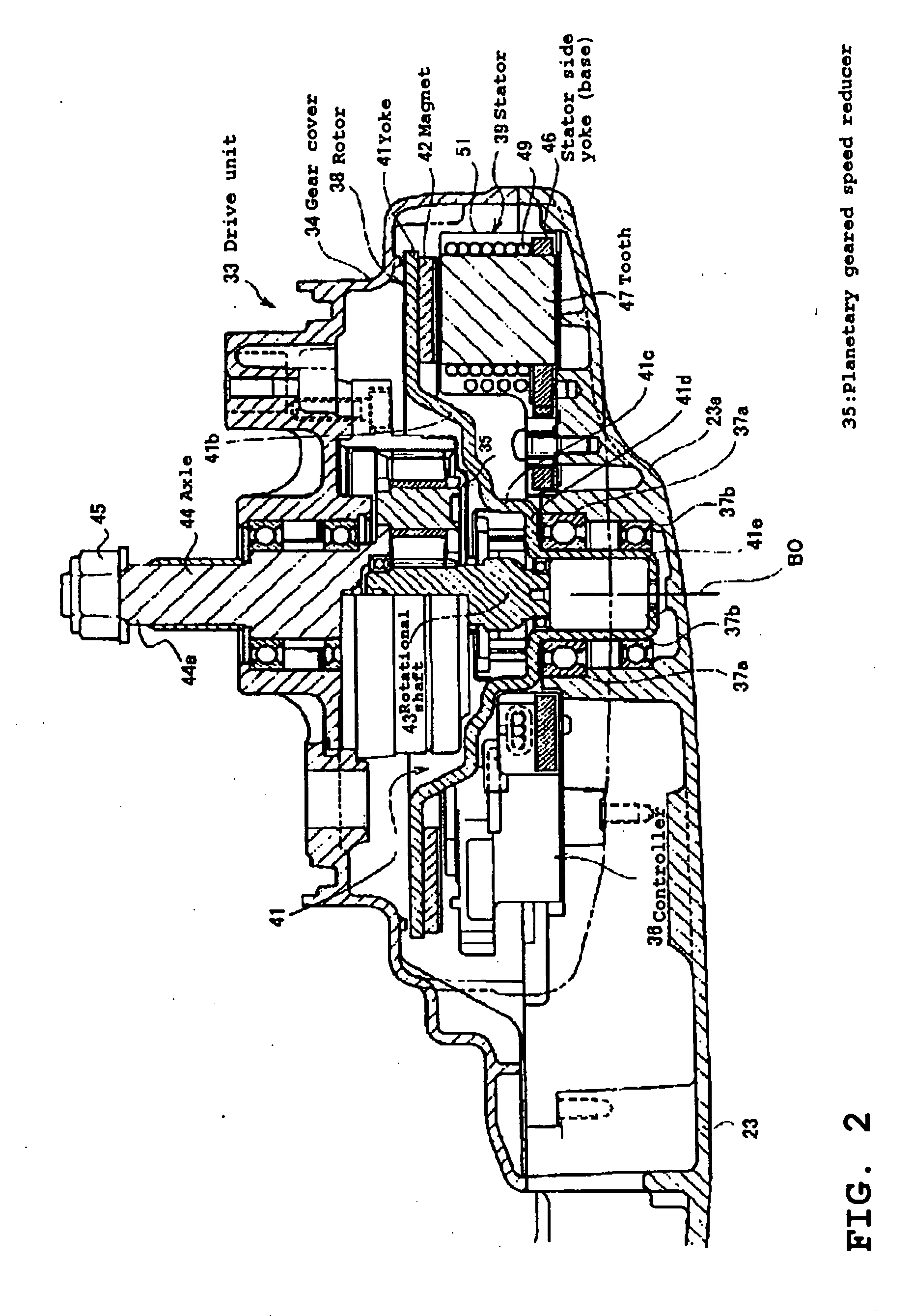Rotary electrical machine
a rotary electrical machine and rotary technology, applied in the direction of magnetic circuit rotating parts, magnetic circuit shape/form/construction, electric devices, etc., can solve the problem of bulkier electric motor units
- Summary
- Abstract
- Description
- Claims
- Application Information
AI Technical Summary
Benefits of technology
Problems solved by technology
Method used
Image
Examples
second embodiment
Structure and Operation of an Axial Gap Type Electric Motor
[0198] FIGS. 17(a) to (d) show a structure of the major part of an axial gap type electric motor in a second embodiment.
[0199] As shown in FIGS. 17(a) and (c), each first tooth 106 in this embodiment is formed in such a manner that a portion lower than an end portion 106-1 facing the annular section 74 of the rotor 71 includes a winding-possessing-portion 106-2 having a winding 107 positioned around it and a non-winding-possessing portion 106-3 having no winding positioned around it.
[0200] In this connection, as shown in FIGS. 17(b) and (c), each second tooth 108 is divided into an inner tooth portion 109 corresponding to the winding-possessing-portion 106-2 of the respective first tooth 106 and an outer tooth portion 110 corresponding to the non-winding-possessing-portion 106-3 of the each first tooth 110.
[0201] The inner tooth portion 109 of each second tooth 108 is placed at an inner side (side radially closer to the c...
third embodiment
Structure of a Radial Gap Type Electric Motor
[0208]FIG. 19 is a cross sectional view, showing a structure of a radial gap type electric motor according to a third embodiment.
[0209] Additionally, in the illustration, in order to simply show the third embodiment in comparison with the first embodiment, components having the same functions are assigned with the same reference numerals as those assigned in FIG. 10.
[0210] As shown in the illustration, this radial gap type electric motor includes a cylindrical rotor 73 rotating about an axis of a rotational shaft (indicated by a rotational center 117 in the illustration), and a first stator core 83 positioned inside of the cylindrical rotor 73 and having a plurality of first teeth 81, one end surfaces of which oppose to the rotor 73. A winding 82 is wound around a circumferential side surface of each first tooth 81 except for both the end surfaces 81a and 81b thereof.
[0211] The electric motor further includes a second stator core 87 ha...
fourth embodiment
Structure of a Radial Gap Type Electric Motor
[0213]FIG. 20 is a cross sectional view, showing a structure of a radial gap type electric motor according to a fourth embodiment.
[0214] Additionally, also in the illustration, in order to simply show the fourth embodiment in comparison with the first embodiment, components having the same functions are assigned with the same reference numerals and symbols as those assigned in FIG. 10.
[0215] As shown in the illustration, this radial gap type electric motor includes a columnar or cylindrical rotor 73 rotating about a rotational shaft 72, and a first stator core 83 positioned outside of the rotor 73 in its radial direction. The first stator core 83 has a plurality of first teeth 81, one end surfaces of which oppose the rotor 73. A winding is wound around a circumferential side surface of each first tooth 81, except for both the end surfaces 81a and 81b thereof
[0216] The electric motor further includes a second stator core 87 having a plu...
PUM
 Login to View More
Login to View More Abstract
Description
Claims
Application Information
 Login to View More
Login to View More - R&D
- Intellectual Property
- Life Sciences
- Materials
- Tech Scout
- Unparalleled Data Quality
- Higher Quality Content
- 60% Fewer Hallucinations
Browse by: Latest US Patents, China's latest patents, Technical Efficacy Thesaurus, Application Domain, Technology Topic, Popular Technical Reports.
© 2025 PatSnap. All rights reserved.Legal|Privacy policy|Modern Slavery Act Transparency Statement|Sitemap|About US| Contact US: help@patsnap.com



